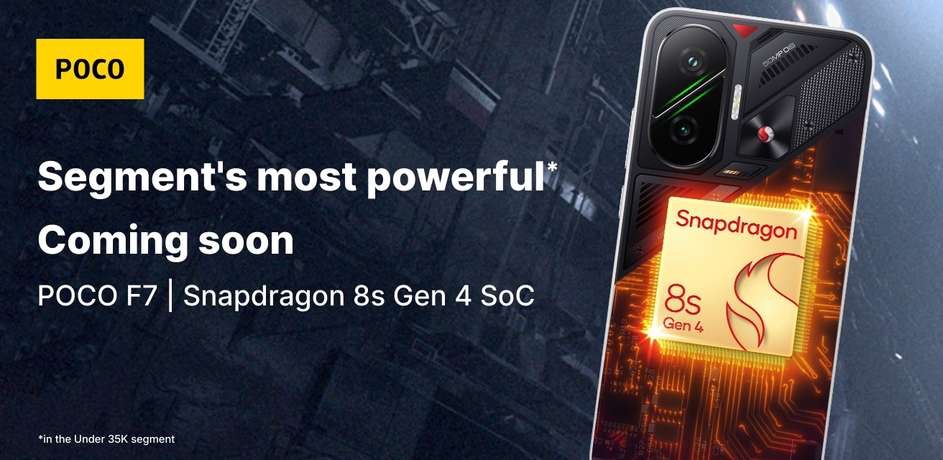On June 18, GSMA 2025 MWC Shanghai officially kicked off. This three-day event was held at the Shanghai New International Expo Center (SNIEC), bringing together about 400 speakers and thought leaders to bring exciting content such as keynote speeches, summit forums and cutting-edge technology displays. This year’s conference focused on four core themes: 5G integration, artificial intelligence+, industry interconnection and empowerment interconnection.
At the agent artificial intelligence summit on the first day of the conference, Dr. Vinesh Sukumar, vice president of AI/general AI product management at Qualcomm Technologies, pointed out that AI development is entering a new stage and the focus of AI development is shifting to edge terminals. Currently, AI is transforming into the field of agent AI, and Qualcomm believes that AI will become a new UI and cover a wide range of terminals. At the same time, to realize this vision, Qualcomm has built hardware and software technologies covering a wide range of edge terminals, creating a solid foundation for the development of the intelligent AI experience on the terminal side.
The following is the full text of the speech:
Good afternoon everyone, I am Vinesh Sukumar. At Qualcomm, we are mainly committed to empowering different terminals from mobile phones to cars to achieve exciting AI experiences in fields such as perception AI, generative AI, agent AI and physical AI (Physical AI). Today we are going to discuss generative AI, the important role Qualcomm plays in the AI industry ecosystem in China and the global market, and some exciting experiences we will launch in the near future.
First of all, looking at the development history of AI, early AI technologies were mainly concentrated in the fields of perception AI such as segmentation, detection, classification, and image enhancement, which laid the foundation for empowering the smartphone experience. But over time, these experiences have evolved a lot, and similar technologies have expanded to markets such as automobiles and PCs, as well as emerging fields such as XR and industrial networks. In these fields, we are all exploring the transition from perceptual data to multimodal data, which can be in text, image or video form, and are all generated based on prompts. We match these technologies to different application tracks to help create a new user experience in the fields of productivity, gaming and even content generation. And at Qualcomm, we are applying this knowledge accumulation to all relevant fields.
As I mentioned before, Qualcomm attaches great importance to generative AI and agent AI. In fact, we are one of the first chip platform manufacturers to show that big models can run completely at the edge. As early as MWC Barcelona in 2023, we demonstrated the generation of conversation content based on prompts on the end, or the generation of 1K x 1K resolution images based on prompts.
So what is the future development direction of AI? At Qualcomm, we attach great importance to working with many model developers, and are committed to promoting the transformation of large-scale basic models to more vertical industries or task-specific models, and helping to achieve edge terminal operation. These industry-specific models may be very large, with the parameter volume that can reach 7-10 billion, and we have begun to push these models to run on different forms of terminals.
In the field of modeling, people used to think that larger models mean better quality, but looking at the development process of large models, it can be seen from models launched by Tongyi Qianwen, Meta, Google or Microsoft that the quality of small models is rapidly improving and catching up with the ability of large models. Taking the comparison of model intelligent index as an example, many small language models (SLMs) have reached the level of Llama 370 billion parameter large model.
Why are edge models becoming increasingly important and critical? They can provide users with a rich experience in the areas of productivity or content creation. In the past, models faced the challenge of how to truly achieve terminal-side deployment. In response to this challenge, Qualcomm provides Qualcomm AI software stack, which can support the deployment of models completely on edge platforms. We are always committed to providing opportunities for ecosystem partners, including developers, to enable cloud training and run on Qualcomm platform-enabled terminals.
Over the past 12 to 18 months, we have achieved commercialization of many key use cases in the edge AI field. In the past, Qualcomm empowered about 200 to 300 AI applications each year. In the past 12 months or so, we have paid more attention to the field of generative AI. In the consumer field, edge AI has been able to support many applications such as content creation, photo editing, image repair, image expansion, etc.; in the enterprise field, there are also more applications such as code generation. All this is possible because we have invested a lot of effort in building basic technology to ensure that these applications can run efficiently on all types of terminals and achieve comprehensive optimization.
Generative AI has brought a lot of help in the past, but it only supports a single modal. Now, we are transforming into the so-called AI field of agents. We believe that AI will become the new UI (user interface) and cover a wide range of terminals.
How to achieve this goal? First of all, we need to see what kind of user experience we expect to create. To this end, we are committed to converging multiple data modalities. These data modalities may be based on images, audio, text, voice, and even video. Based on these modal support, we can understand user intentions and match multiple applications to invoke AI processing capabilities to meet user needs. This gave birth to the concept of AI agents. Agent AI focuses on interpreting requirements and taking actions toward automation. It is quite challenging to realize the agent experience, but Qualcomm is constantly strengthening the construction of basic technology to lay a solid foundation for these agent AI use cases.
We can promote the development of AI use cases in various fields including entertainment, e-commerce, concierge services, map navigation and even music. To achieve these goals, a wide marginal layout is required, a powerful software stack that can understand user needs and translate them into a proper operation.
When converting user intentions into appropriate operations, there will always be situations where a device may not be able to answer or respond to user queries. At this time, if the user needs to communicate between devices, we can achieve it through the Qualcomm AI software stack. Qualcomm’s products cover a wide range of edge terminals, covering a variety of product forms from mobile phones to PCs and XRs, so this is easier for us. In addition, with the massive user data collected on these terminals, we can interpret user intentions more successfully and take action.
Agent AI also faces many challenges when deploying commercially, such as how accurate, predictable and consistent the agent AI is? Can it accurately match user needs? To do this, it is crucial to have the necessary software stack support. Our Qualcomm AI software stack is very powerful and can support multiple small language models for specific tasks after long-term technical accumulation.
Secondly, achieving better service quality means that when users make specific prompts (prompts), AI can respond at the fastest speed, which requires a lot of investment in hardware. To achieve this goal, Qualcomm has built general computing units such as CPUs and GPUs, as well as dedicated accelerators such as Hexagon NPUs.
Last but not least is how to scale and provide flexibility to the developer community. This key is to provide the necessary tools and software support so that developers can adapt to different environments and situations more easily.
And we have built a technical infrastructure for these needs. You will see more releases from Qualcomm in the next 6 months. We will help launch more consumer-oriented applications, so stay tuned.
I briefly mentioned earlier how to improve the service quality of agent AI. We can do this because we have dedicated engines like Qualcomm Hexagon NPU. As a dedicated engine, it can support tasks such as matrix operations and tensor operations, which is particularly important for continuous use cases that require reduced battery life impact.
Now, as we move towards the era of AI reasoning, as I have been saying, we always face the problem that edge platforms cannot solve user queries due to performance constraints. In this case, how do you ensure that the user experience is not affected? At Qualcomm, we have deployed edge inference in a distributed deployment across multiple terminals. If some queries cannot be solved through terminal computing power, we will use a local edge server based on Qualcomm platform to continue viewing, understanding and answering queries; if the local edge platform cannot be solved, AI will obtain the user’s context information, then transfer the task to the central cloud subsystem, process the query based on the user’s personal knowledge graph, and then give a more reasonable reply. Thank you very much for this speech opportunity, thank you everyone!
Discover more from PassionateGeekz
Subscribe to get the latest posts sent to your email.





